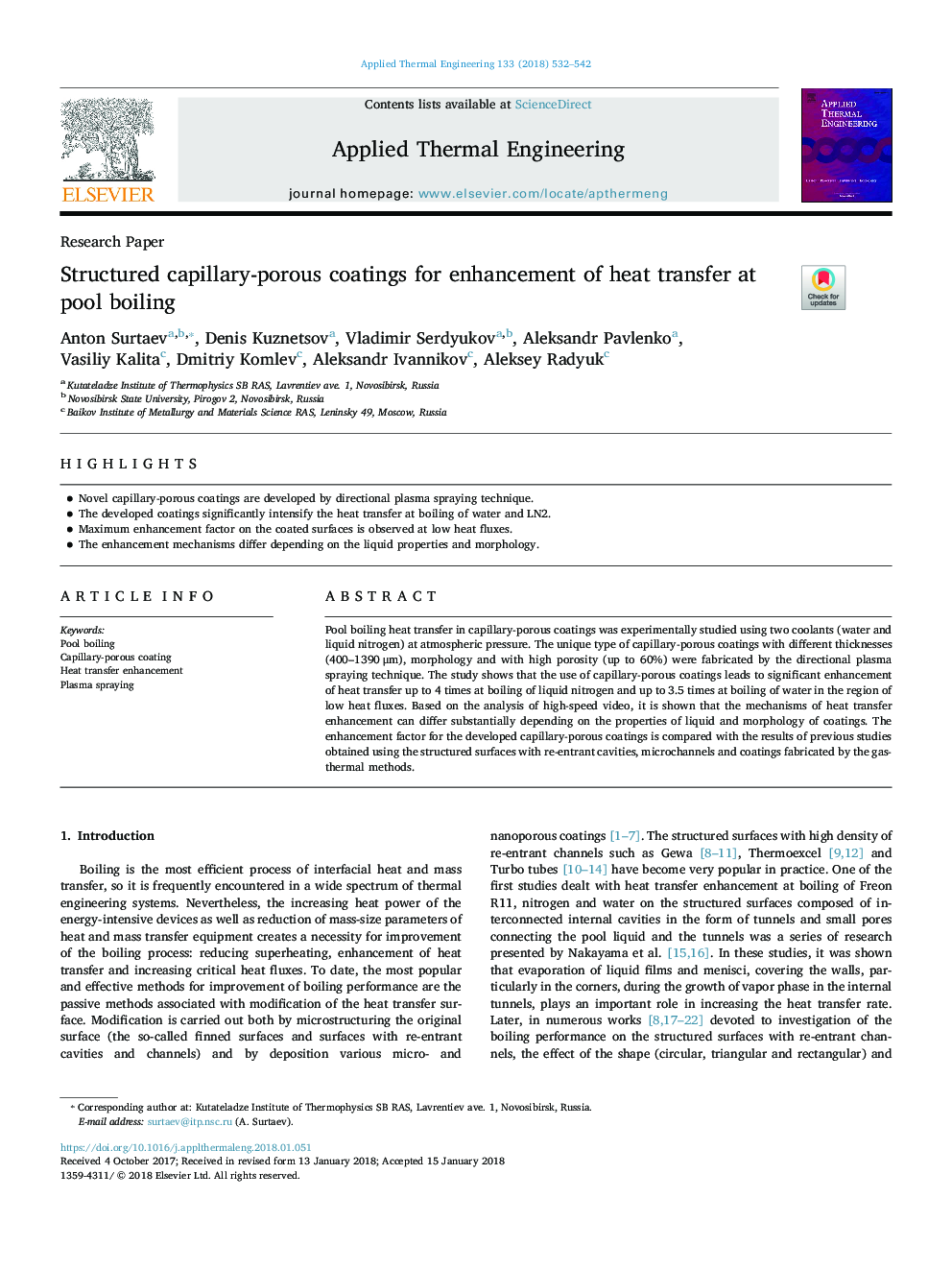| Article ID | Journal | Published Year | Pages | File Type |
|---|---|---|---|---|
| 7045940 | Applied Thermal Engineering | 2018 | 11 Pages |
Abstract
Pool boiling heat transfer in capillary-porous coatings was experimentally studied using two coolants (water and liquid nitrogen) at atmospheric pressure. The unique type of capillary-porous coatings with different thicknesses (400-1390â¯Î¼m), morphology and with high porosity (up to 60%) were fabricated by the directional plasma spraying technique. The study shows that the use of capillary-porous coatings leads to significant enhancement of heat transfer up to 4 times at boiling of liquid nitrogen and up to 3.5 times at boiling of water in the region of low heat fluxes. Based on the analysis of high-speed video, it is shown that the mechanisms of heat transfer enhancement can differ substantially depending on the properties of liquid and morphology of coatings. The enhancement factor for the developed capillary-porous coatings is compared with the results of previous studies obtained using the structured surfaces with re-entrant cavities, microchannels and coatings fabricated by the gas-thermal methods.
Related Topics
Physical Sciences and Engineering
Chemical Engineering
Fluid Flow and Transfer Processes
Authors
Anton Surtaev, Denis Kuznetsov, Vladimir Serdyukov, Aleksandr Pavlenko, Vasiliy Kalita, Dmitriy Komlev, Aleksandr Ivannikov, Aleksey Radyuk,
